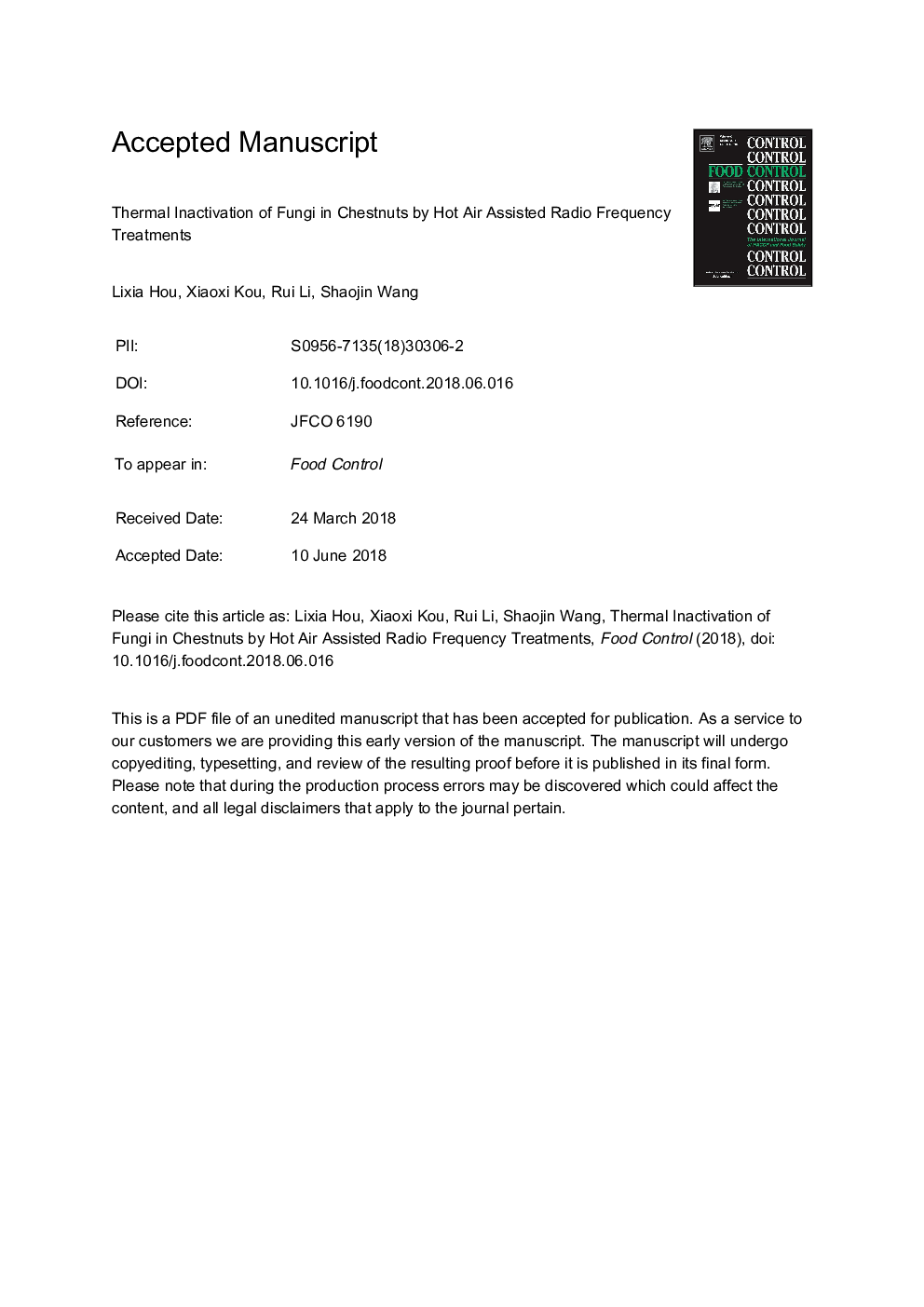| Article ID | Journal | Published Year | Pages | File Type |
|---|---|---|---|---|
| 8887778 | Food Control | 2018 | 34 Pages |
Abstract
Infestations with fungi in chestnuts are one of the major safety issues during process and storage, resulting in short shelf-life and high economic losses. The purpose of this research was to study possible applications of radio frequency (RF) treatments for pasteurization of chestnuts to replace chemical methods. Thermal lethal kinetic models of fungi isolated from spoilage chestnuts and parameters of the developed model were determined. A 6â¯kW, 27â¯MHz free-running oscillator RF system combined with hot air heating was used to validate the treatment parameters based on thermal lethal kinetic models of fungi. The results showed that four mycotoxigenic fungi dominated and were isolated at frequency of 58.31â¯Â±â¯2.39% for Penicillium crustosum, 17.78â¯Â±â¯5.00% for Penicilluim discolor, 15.66â¯Â±â¯7.67% for Penicillium expansum, and 14.24â¯Â±â¯6.71% for Penicillium glabrum from a total sample size of one hundred spoilage nuts. Modified Weibull distribution model (R2â¯=â¯0.939 to 0.999) had a better description of the inactivation behavior of Penicillium sp. than the first-order kinetic model (R2â¯=â¯0.829 to 0.993) and P. crustosum was the most heat resistant fungi in chestnuts. Heating chestnuts to 60â¯Â°C or higher using hot air assisted RF energy resulted in 4-log reductions of P. crustosum isolated from moldy chestnuts. Quality of chestnuts was not influenced by the hot air assisted RF treatments because no significant differences in moisture, firmness, and color were observed between thermal treatments and untreated controls. Meanwhile, RF treatments also help to inhibit the growth of fungi during accelerated shelf life storage. The RF treatments may provide a rapid and environmentally friendly method to replace chemical fungicide for pasteurizing chestnuts.
Related Topics
Life Sciences
Agricultural and Biological Sciences
Food Science
Authors
Lixia Hou, Xiaoxi Kou, Rui Li, Shaojin Wang,
